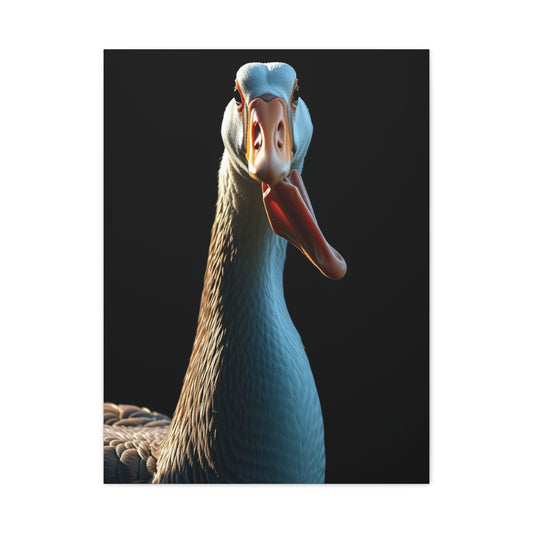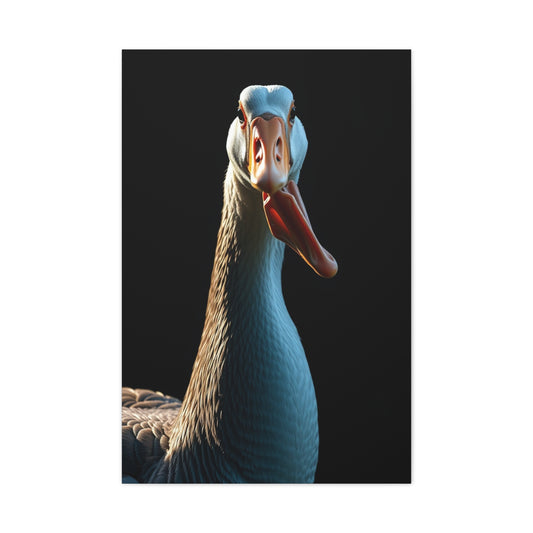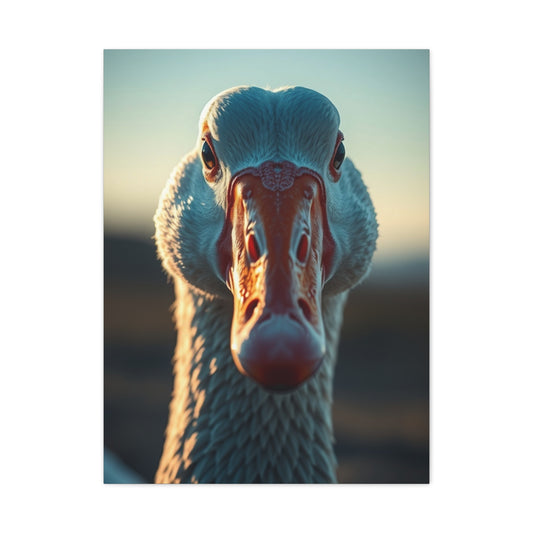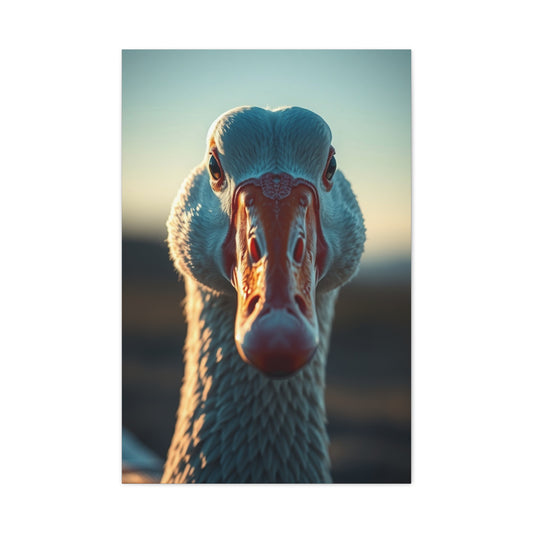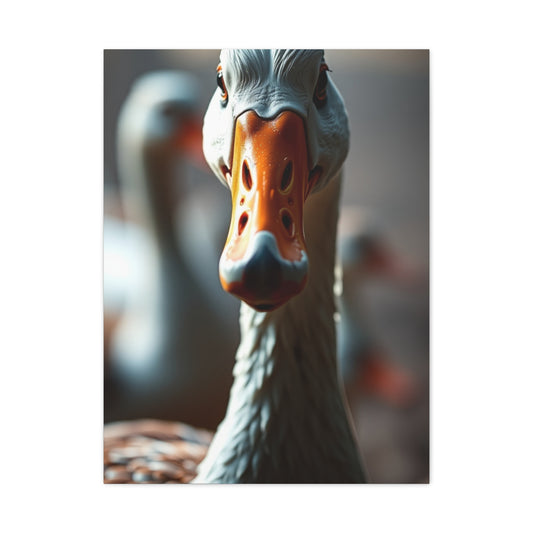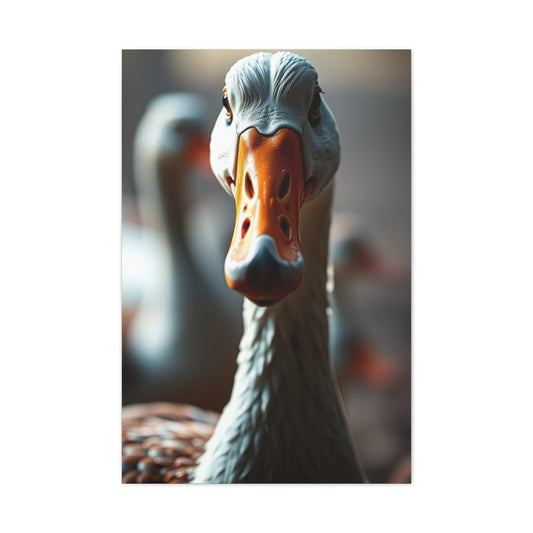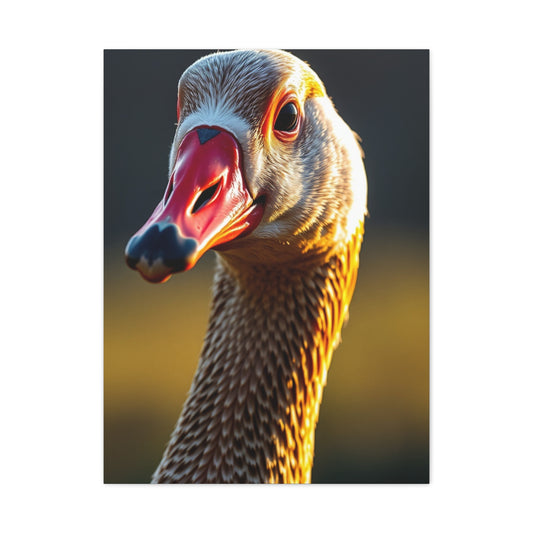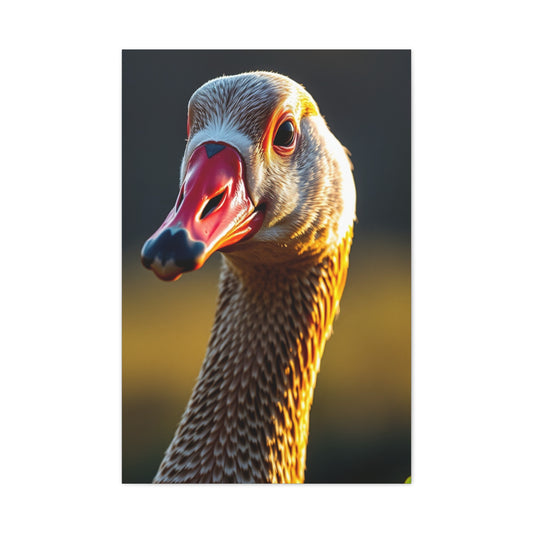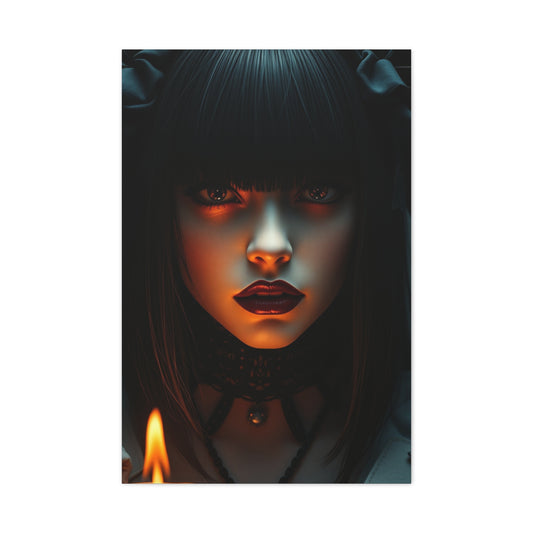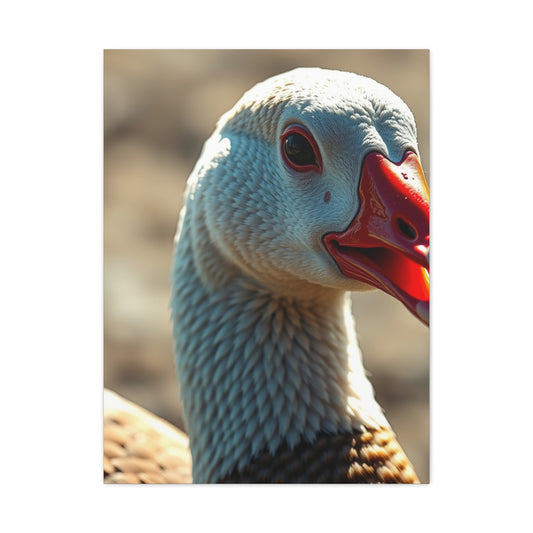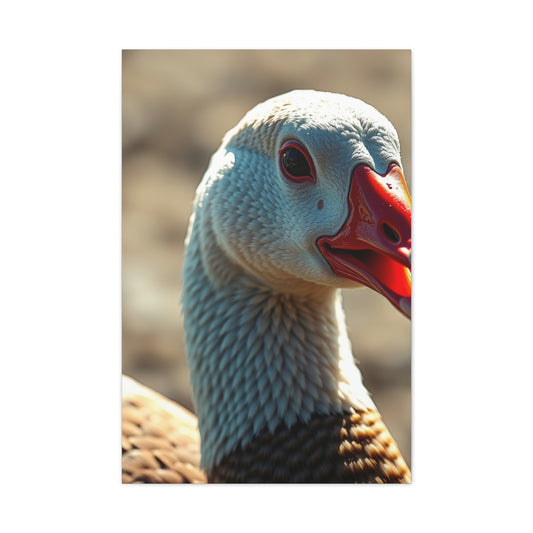Selecting the right surface can dramatically influence how you build skill with pastels. When artists invest in surfaces tailored to their creative needs, they gain confidence and can better evaluate their improvements over time. One advanced option for displaying finished work and tracking development is using custom art print presentation solutions. This service allows artists to transform their best studies into refined pieces that reinforce value, composition, and tone learning.
Choosing paper that aligns with your approach—whether you’re exploring bold color or detailed realism—reduces friction between your intentions and outcomes. Beginners often struggle when their paper doesn’t hold layers well, or when the texture distracts them from core skills like blending and value consistency. By considering how surface choice supports your goals, you begin to refine technique purposefully. Having a physical representation of your progress, such as reproduced studies from a primary practice session, gives psychological reinforcement that your skills are evolving.
Canvas substitutes or custom display outputs also create an incentive to practice with discipline. When you know you can showcase work in a meaningful way, you tend to work with greater focus and deliberate technique decisions. The act of preparing your best pastel pieces for refined presentation encourages planning, layering control, and thoughtful composition—skills that directly transfer back to everyday practice on your chosen pastel paper.
Finally, understanding your current skill level allows you to select surfaces that challenge without overwhelming. Personalized presentation formats help reinforce what kinds of paper textures and tones best complement your stylistic strengths, revealing deeper insights into how physical material interacts with creative intent.
Selecting Surface Texture With Film Scanner Principles
Understanding how surface texture affects pastel application can be compared to how film scanners capture nuance and detail. Just as the right scanner reveals subtle gradations in negatives, the correct pastel paper texture allows detailed layering and tonal shifts to emerge without muddiness or loss of clarity. When evaluating surface options, consider how different textures support layer retention, much like selecting high-definition equipment such as top negative and flatbed scanners for detail. This analogy helps artists think in terms of resolution, depth, and fidelity.Surface texture is one of the most significant determinants of pastel performance. Rougher papers offer more “tooth” that holds pigment particles, enabling multiple layers without quickly filling the surface. This tooth makes blending smoother and richer because particles interlock across layers. Conversely, finer textures provide less grip but facilitate refined details, making them suitable for artists focusing on delicate features or precision line work.
For artists transitioning from beginner to intermediate work, experimenting with various textures can unlock new techniques. For example, a medium-grain surface might support both broad, expressive strokes and finer details within the same composition. Viewing this exploration through the lens of high-detail digital tools encourages mindful assessment of how each surface reveals or conceals nuance in your marks.
Ultimately, artists who think about texture as digital imaging professionals think about resolution—how much pigment detail the surface can capture before it loses fidelity. This mindset accelerates technical growth by creating more intentional decisions about when to push layering, when to blend, and when to preserve crisp edges. The result is pastel work that conveys greater depth and intention.
Harmonizing Pastel Tone With Abstract Shape Pattern Learning
Artists often study abstract shape and pattern theory to understand how visual elements interact across a composition. Pattern exploration teaches how rhythm, balance, and repetition contribute to expressive impact. Translating these lessons into pastel requires a surface that supports both dynamic mark-making and subtle tonal shifts. Exploring how tonal relationships manifest on your chosen paper enhances your ability to control contrast, color harmony, and compositional unity. A strong reference for this type of structural learning can be found in abstract shape pattern design collections.Practicing abstract patterns encourages artists to focus on surface interaction rather than subject matter alone. You begin to see how pastel pigment rests against paper tooth, how hue transitions change with surface texture, and how layering affects visual rhythm. This exploration is not merely decorative—it creates muscle memory for technical decisions such as when to add contrast or how to build depth without losing clarity. The lessons learned from abstract studies translate to figurative work, landscapes, and expressive compositions alike.
The right surface invites experimentation with bold shapes and complex color interplay. Artists can push the boundaries on value transitions, saturations, and edge quality when their paper consistently supports layering without saturating too quickly. Over time, this results in increased fluency, where handling pastel becomes second nature rather than a struggle against the medium.
By practicing with abstract pattern principles, artists internalize how surface texture influences balance, movement, and emphasis. This skill becomes invaluable when transitioning to representational work, as the same visual principles apply whether you're building dynamic non-objective pieces or detailed studies. The surface becomes an active collaborator in refining your artistic voice.
Exploring Dynamic Drip And Motion Through Game Inspired Imagery
Movement and energy are fundamental to elevating pastel work from static representation to expressive impact. Understanding how dynamic forms interact with surface texture can be reinforced by studying imagery that evokes motion and layered complexity, similar to how dramatic compositions are handled in themed game visuals like those found in high impact visual design galleries. These references help artists consider how movement translates into mark-making rhythm on their chosen paper.When practicing expressive motion with pastels, consider how directionality of strokes interacts with surface texture. Rougher papers can enhance dynamic strokes by providing grip, allowing pigment to retain energy and motion. In contrast, smoother surfaces allow gestures to glide, which may be preferable for soft transitions but require more careful control to avoid unintentional smearing. Artists who explore motion-focused work often refine their technical range, adapting strokes to both fluid and precise applications.
Dynamic visual inspiration encourages artists to step beyond static poses and explore compositional movement. The way layered forms overlap and interact on the surface teaches depth and sequence—key aspects of expressive realism. Artists gain a deeper understanding of visual flow and spatial organization when they intentionally pursue compositions with implied motion.
Surface choice affects how movement is perceived. A paper that supports robust layering without quickly saturating allows artists to build visual tempo and directional nuance. The result is work that feels dynamic rather than flat, reinforcing technical growth through adaptive application techniques and refined control of pastel pigment.
Analyzing Portrait Form With Legendary Figure Study
Portraiture demands mastery of subtle transitions, accurate proportions, and controlled layering. Artists refine their understanding of form, light, and expression by studying iconic figures, which can inspire both technical focus and emotional depth. A comprehensive example of iconic figure representation that artists can learn from is available through pieces like celebrated football legend imagery. While the final output differs from pastel work, the core principles of observation, proportion, and tonal contrast carry over directly into surface decisions.
Studying portraiture on the right paper deepens technical facility. The surface must support both fine detail in facial features and multiple layers of color to achieve realistic skin tones. Too smooth, and the pastel may drift without grip; too rough, and delicate transitions become difficult. Artists who regularly practice portraits refine skills such as edge control, value modulation, and layering hierarchy—skills that elevate all other pastel work.
Observation exercises tied to iconic figure studies help artists analyze how light models form, how shadows define volume, and how subtle color shifts create lifelike presence. These exercises require a surface that waits for careful refinement without prematurely filling. Pastel papers with balanced tooth encourage precise mark-making while still allowing soft blending.
As artists progress with portrait studies, they develop an intuitive sense of proportion and depth that transfers seamlessly into other subjects. The practice becomes a laboratory for technique, enhancing confidence and visual acuity across a wide range of artistic endeavors.
Landscape Immersion And Depth With Grand Scenery Reference
Landscape work challenges artists to capture atmospheric perspective, light variation, and complex textures. The right pastel surface can make these challenges more approachable by supporting rich layering and smooth transitions. Immersive scenery provides invaluable learning opportunities for understanding distance, depth, and natural color relationships. A notable example of expansive scenery that can inspire such exploration is large scenic landscape representation.Working on landscape studies encourages artists to think in terms of planes: foreground detail, middleground transition, and background atmosphere. Each plane demands specific techniques—fine detail near and expressive blending far. A surface that holds enough pigment for multi-layered skies, rolling hills, and tonal depth is crucial for realizing these distinctions. Learning how to balance pigment density against subtle atmospheric shifts refines an artist’s grasp of value and color temperature.
Landscape practice also strengthens brush-like pastel techniques, where broad strokes and meticulous details operate in tandem. Artists learn to modulate pressure, layer systematically, and blend with intention. The structure and texture of the paper support these explorations by either facilitating smooth gradations or offering rich tooth for layered complexity.
Finally, landscape work reinforces patience and observation—cornerstones of artistic growth. When artists commit to studying nature’s depth and light, they develop an enhanced visual vocabulary that enriches every aspect of their pastel practice, pushing them toward a deeper command of both material and technique.
Harnessing Water Movement Through Fluid Reference
Water is one of the most complex subjects to portray with pastels due to its shifting reflections, transparency, and motion patterns. Artists seeking to strengthen their control over fluid effects benefit greatly from studying reference imagery that highlights motion and continuity, like dynamic water movement representations. These references train artists to observe how light interacts with surface texture and how color transitions communicate form and flow.Capturing water requires fluid mark transitions and careful balance between sharp edges and blended planes. An accommodating paper surface allows artists to build reflective tones without quickly saturating, enabling layered detail and thoughtful transitions. The study of wave motion encourages controlled pastel application, teaching artists to follow natural rhythms in strokes rather than forcing unnatural marks.
This practice also develops adaptive blending skills, where soft edges coexist alongside crisp highlights. Artists learn to modulate pressure intelligently, leveraging paper texture to control pigment spread. Over repeated practice, the tactile feedback from the surface becomes an instructor—guiding transitions that reflect depth and motion convincingly.
When artists consistently challenge themselves with complex subjects like water movement, their overall pastel technique becomes more versatile. They internalize lessons on value contrast, directional strokes, and layered transition, resulting in work that carries greater compositional confidence and expressive range.
Integrating Portrait And Expression With Fashion Inspired Form
Expressive figure work, particularly when infused with stylistic nuance, teaches artists to manage bold color, composition, and personality. Fashion-inspired references push artists to think beyond literal representation, focusing instead on stylized form, posture, and expressive color relationships. One example that captures this blend of figurative nuance and energy can be seen through expressive figure study references.This type of work sharpens an artist’s ability to handle both expressive marks and technical precision. Pastel practice on the right surface allows artists to layer vibrant hues without losing clarity. The paper must offer enough contrast retention while supporting repeated layering for color modulation. Artists gradually build an intuitive understanding of how color choices and transitions influence mood and personality.
These studies also reinforce edge control—an essential skill for representing dynamic forms and expressive gestures. Artists learn when to emphasize sharp outlines versus when to soften edges for atmospheric effect. Studying figure dynamics encourages confident strokes and intentional layering, furthering perceptual awareness of light, shadow, and form.
By engaging with expressive reference sources, artists develop deeper emotional communication through pastel work. The surface becomes less of a barrier and more of a collaborator, supporting nuanced transitions and vibrant expressions that strengthen technical proficiency across all subject categories.
Interpreting Natural Patterns With Abstract Animal Inspired Form
Pattern recognition is critical for mastering pastel technique, especially when translating complex visual rhythms into mark-making decisions. Natural forms and patterns, particularly those with high contrast and organic repetition, challenge artists to balance precision and flow. Studying striking patterns found in nature, similar to high contrast natural pattern reference, invites artists to refine how they organize value, movement, and edge quality on the surface.This type of study develops an artist’s ability to break down complex structures into achievable mark sequences. Observing how pattern rhythm influences composition fosters disciplined repetition and intentional modulation of pastel pressure. A well-chosen surface supports this exploration by holding pigment fidelity across repeated passages without premature saturation.
Artists practicing pattern-based studies gain fluency in both directionality and transition. They learn to anticipate how layers interact, how textures build visual rhythm, and how light and shadow interplay to define form. This not only improves technical execution but also deepens visual analysis skills, which transfer seamlessly into more representational work.
Ultimately, pattern studies cultivate an artist’s visual intelligence, supporting confident judgments about contrast, flow, and spatial organization. These skills become foundational for expressive work in all genres, reinforcing how thoughtful surface choice accelerates meaningful artistic growth.
Enhancing Facial Detail Precision With Digital Reference Tools
When practicing figurative pastel work, particularly portraits, artists must learn to observe subtle shifts in facial structure, proportion, and expression. Developing sensitivity to these nuances strengthens overall ability to render life-like depictions and deepens understanding of light, shadow, and form. Integrating digital resources into traditional study routines can be remarkably effective, especially when those tools reveal how features behave under transformation scenarios similar to what professionals examine in leading face transformation reference tools.Digital apps that manipulate and replace facial features provide artists with insight into small but impactful changes that can occur across lighting conditions, expressions, and angle shifts. Analyzing these variations trains the eye to detect value differences and surface contours that might otherwise go unnoticed. When transitioning from digital observation to pastel application on paper, this heightened perception translates into more confident mark-making and improved capture of subtle detail.
In practice, this process encourages artists to consider how pastel pigments interact with paper texture under varied tonal demands. A surface that holds fine transitions enables deeper exploration of light edges, soft gradients, and refined skin tones. By studying digital references alongside tactile pastel work, artists bridge analytical skills with hands-on technique. Over time, this combined approach accelerates mastery of facial detail, equipping pastel artists with the precision and confidence needed to tackle complex portraits with compositional clarity and emotional depth.
Organizing Artistic References With Strategic Image Hosting Systems
Effective practice and artistic development require not only consistent creation but also thoughtful organization of reference material. Visual artists often build extensive libraries of images they use for studies, inspiration, and comparison across projects. Strategic use of both paid and free digital platforms can streamline workflow, ensure easy retrieval of high-quality visuals, and support long-term progress tracking. Artists who review and curate their studies benefit from tools highlighted in comprehensive image hosting platform comparisons.Maintaining a structured archive enables artists to revisit earlier work objectively, compare techniques, and measure growth. For pastel practitioners, this is especially valuable because subtle improvements in layering, texture handling, and color control may be hard to perceive without consistent historical context. Properly catalogued images of past works, annotated with surface type and paper choice, deepen self-awareness and inform future decisions about material selection.
Beyond storage, these platforms support creative momentum by centralizing visual resources that feed inspiration. Whether organizing thematic collections, saving reference compositions, or tracking progress photos, a reliable image hosting system becomes an extension of the artist’s workflow. This digital discipline reinforces intentional practice, reduces time wasted searching for visuals, and makes it easier to integrate past lessons into new work. Ultimately, when artists pair thoughtful digital organization with informed paper selection and technique, they create a powerful ecosystem for continuous improvement and artistic refinement.
Architectural Observation And Structural Discipline In Pastel Practice
Architectural subjects are powerful training tools for pastel artists because they demand accuracy, proportion, and disciplined mark placement. When artists study buildings, they sharpen perspective control and learn to translate rigid geometry into expressive yet believable compositions. Visual references drawn from curated sources such as architectural design inspiration collections help artists analyze how structure, shadow, and repetition interact across a surface.Pastel paper plays a critical role in architectural studies. Papers with consistent tooth allow straight edges to remain crisp while still accepting layered shadows and atmospheric depth. Artists practicing architectural subjects often discover weaknesses in alignment or proportion, and the right surface supports correction without surface breakdown. This encourages longer working sessions and deeper analytical engagement with form.
Repeated architectural studies build transferable skills. Understanding how light wraps around solid forms improves value control in all subjects. Over time, artists gain greater confidence in handling complex compositions, making architecture-based practice an effective method for accelerating technical growth through thoughtful pastel paper selection.
Translating Photographic Accuracy Into Pastel Foundations
Photography teaches artists how to see. Beginners especially benefit from understanding how cameras interpret light, framing, and focal depth. Learning from photographic principles similar to those explained in beginner photography camera guidance helps pastel artists improve composition and tonal accuracy in their work.When artists work from photo references, pastel paper must support subtle gradients and fine detail. Smooth transitions between light and shadow rely on surfaces that accept layering without clogging. Artists who intentionally pair strong references with reliable paper develop a clearer understanding of tonal hierarchy and edge control.
This approach strengthens realism and observational accuracy. Over time, artists trained through photographic analysis become more confident in translating visual information into pastel marks. The paper becomes a stabilizing factor, allowing technique to evolve alongside visual understanding rather than limiting it.
Developing Observational Precision Through Discreet Study
Observation is the backbone of artistic skill, and studying discreet or candid visual moments refines this ability. Visual resources that emphasize unnoticed detail, such as those discussed in covert visual observation technology, reinforce the importance of subtlety and accuracy in visual interpretation.Pastel artists benefit from practicing understated subjects that require attention to small value shifts and quiet transitions. The chosen paper must support light pressure application and delicate layering. This trains artists to slow down, observe carefully, and build images gradually rather than relying on heavy marks.
Through this type of disciplined study, artists improve their sensitivity to form and light. The resulting control enhances all areas of pastel work, from portraiture to landscape, reinforcing how paper choice supports refined observational growth.
Color Sensitivity And Organic Form Development
Studying natural subjects enhances color sensitivity and organic mark-making. Floral compositions, in particular, teach artists how to balance softness with structure. References similar to soft yellow floral compositions help artists explore subtle color temperature shifts and layered transitions.Pastel paper selection is crucial when working with delicate organic forms. A surface that supports light layering allows artists to build luminous petals and gentle shadows without overpowering the subject. This process trains restraint and precision, essential skills for advanced pastel work.
Floral studies also improve blending techniques. Artists learn to control edges, vary pressure, and manage pigment density. Over time, this practice strengthens color intuition and enhances the artist’s ability to create harmonious compositions across diverse subjects.
Capturing Motion And Energy With Controlled Layering
Movement-based subjects challenge artists to convey speed, rhythm, and intensity through static media. Learning from dynamic visual disciplines such as those explored in action photography lens techniques helps pastel artists understand how motion is framed and emphasized.Pastel paper must support directional strokes and repeated layering when capturing movement. Rougher surfaces allow marks to retain energy, while balanced tooth prevents excessive smudging. Artists practicing motion learn to commit to strokes with confidence, trusting the surface to hold intent.
This type of study improves gesture, composition, and expressive clarity. Artists become more decisive, and their pastel technique gains vitality. The relationship between motion-focused practice and appropriate paper choice directly influences the strength and credibility of the final work.
Expanding Imagination Through Fantasy Driven Expression
Fantasy subjects free artists from strict realism while still demanding technical control. Imaginary scenes encourage bold color choices, layered textures, and expressive compositions. Inspiration drawn from sources like dreamlike fantasy art themes helps artists push creative boundaries within a structured practice.Pastel paper supports fantasy work by enabling heavy layering and experimental techniques. Artists can explore unconventional color combinations and dramatic lighting without fear of surface failure. This experimentation strengthens problem-solving skills and deepens material understanding.
Fantasy studies also encourage narrative thinking. Artists learn to guide the viewer’s eye through composition and contrast. These lessons translate into stronger storytelling across all artistic genres, reinforcing the importance of a dependable pastel surface.
Creating Dedicated Practice Environments For Artistic Focus
An artist’s environment influences consistency and motivation. Dedicated creative spaces encourage regular practice and sustained focus. Visual inspiration drawn from curated ideas such as creative space enhancement concepts highlights how surroundings can support artistic discipline.When artists create spaces designed for pastel work, paper storage, lighting, and layout become more intentional. Having consistent materials readily available promotes habitual practice. This consistency accelerates skill development by reducing friction between intention and action.
A well-organized workspace reinforces professional habits. Artists who treat their practice seriously tend to make more deliberate choices about paper quality and surface suitability, resulting in steady technical improvement over time.
Refining Composition Through Digital Image Manipulation Insight
Understanding digital image manipulation enhances compositional awareness. Tools that alter perspective and form, such as those explained in advanced image warp techniques, teach artists how shapes can be adjusted without losing believability.Applying this knowledge to pastel work improves planning and correction. Artists learn to anticipate distortions and adjust compositions early. Pastel paper that allows lifting and reworking supports this analytical approach, making refinement less stressful.
This integration of digital understanding with traditional media strengthens adaptability. Artists gain confidence in adjusting proportions and perspective, leading to more polished and intentional pastel compositions.
Exploring Symbolic Themes And Emotional Color Language
Symbolic and thematic subjects encourage emotional expression through color and form. Astrological and conceptual themes, such as those represented in aquarius inspired visual themes, offer artists a framework for exploring mood-driven palettes.Pastel paper selection influences how effectively emotion is conveyed. Surfaces that enhance color saturation allow symbolic hues to resonate more strongly. Artists practicing thematic work develop a deeper understanding of color psychology and visual storytelling.
This type of exploration strengthens personal style. Artists move beyond technical replication toward expressive intention, using pastel paper as a medium for emotional clarity and conceptual depth.
Reimagining Perspective With Spherical Visual Experiments
Alternative perspectives challenge traditional composition habits. Studying spherical and distorted imagery, similar to techniques shown in tiny planet photo effects, helps artists rethink spatial relationships.Pastel paper must support experimentation when artists attempt unconventional compositions. Surfaces that tolerate repeated adjustments allow artists to explore without fear of ruining the work. This builds resilience and creative courage.
Through perspective experimentation, artists expand visual flexibility. The skills gained enhance problem-solving, spatial awareness, and compositional confidence, reinforcing how thoughtful paper choice supports advanced artistic growth.
Channeling Bold Energy Through Expressive Pastel Choices
Expressive energy is a powerful driver of artistic growth, and artists often benefit from working with themes that emphasize confidence, intensity, and movement. Bold conceptual inspiration helps pastel artists push beyond hesitation and engage more decisively with their materials. Visual collections centered on strong identity, such as aries inspired artistic themes, reinforce the idea that emotional force and technical execution must work together.When artists approach pastel work with assertive intent, paper choice becomes even more critical. A responsive surface that accepts strong pressure and repeated layering allows decisive marks to remain vibrant rather than brittle. This supports artists who are learning to trust their instincts and commit to compositional choices without constant correction. Over time, working with energetic themes trains muscle memory and improves stroke confidence.
Expressive practice also refines color judgment. Artists become more attuned to saturation, contrast, and temperature when the subject demands intensity. Pastel paper that maintains pigment clarity under heavy application encourages experimentation without sacrificing control. This balance between freedom and structure accelerates skill development and helps artists establish a more confident visual voice.
Improving Visual Accuracy Through Framing Awareness
Understanding how scenes are framed sharpens an artist’s ability to select and organize visual information. Framing awareness teaches artists what to include, what to exclude, and how focal points are established. Concepts explored in resources like camera viewfinder functionality explained offer valuable lessons that translate directly into pastel composition.When artists apply framing principles to pastel work, they become more intentional about cropping, balance, and perspective. The chosen paper must support careful planning, allowing light sketching, adjustment, and refinement without surface damage. This encourages artists to develop compositions thoughtfully rather than relying on spontaneous placement alone.
Over time, framing discipline improves narrative clarity. Artists learn how edge relationships and negative space guide the viewer’s eye. Pastel paper that tolerates erasing and reworking supports this analytical approach, reinforcing compositional confidence and leading to more cohesive, professional-quality results.
Communicating Emotion Through Thoughtful Visual Gifting Concepts
Art is often created to communicate emotion, and thinking about artwork as a meaningful gift helps artists refine expressive intent. Emotional clarity becomes essential when the goal is to connect with a viewer on a personal level. Exploring ideas similar to those found in romantic creative gift inspirations helps artists consider how mood, symbolism, and color choices influence emotional response.Pastel paper plays a subtle but important role in emotional storytelling. Softer surfaces encourage gentle blending and intimate transitions, while firmer textures support clarity and contrast. Artists who work with emotionally driven themes learn to choose paper that aligns with the desired mood rather than defaulting to a single surface for all subjects.
This approach strengthens intentionality. Artists begin to ask why a particular color, texture, or edge treatment feels appropriate. Over time, this emotional awareness improves storytelling ability and elevates pastel work from technical exercise to meaningful visual communication.
Translating Musical Rhythm Into Visual Flow
Music and visual art share rhythm, tempo, and emotional pacing. Artists who explore musical themes often develop stronger compositional flow and timing. Visual interpretations inspired by concepts such as jazz culture visual expression encourage artists to think in terms of movement, repetition, and improvisation.Pastel paper must support rhythmic mark-making. Surfaces with balanced tooth allow artists to layer repeated strokes without losing vibrancy. This supports visual tempo, where marks feel intentional and connected rather than scattered. Artists practicing rhythm-based compositions become more sensitive to spacing and directional flow.
Over time, translating musical rhythm into pastel form strengthens visual cohesion. Artists learn how to vary intensity, pause areas, and build crescendos within a composition. These skills enhance overall compositional maturity and reinforce how the right paper supports expressive structure.
Developing Optimism And Narrative Through Conceptual Themes
Conceptual themes encourage artists to embed ideas and messages within their work. Optimistic or reflective narratives challenge artists to balance abstraction with clarity. Visual references centered on hopeful messaging, such as positive modern art concepts, inspire artists to explore how form and color convey reassurance and possibility.Pastel paper selection influences how effectively these narratives are communicated. Papers that preserve subtle gradations help artists convey calm, continuity, and balance. This supports storytelling that relies on mood rather than overt detail.
Artists who practice conceptual storytelling develop stronger planning habits. They think beyond surface appearance and consider underlying meaning. Over time, this leads to more purposeful compositions and a deeper understanding of how material choices reinforce conceptual intent.
Expanding Creative Thinking Through Unconventional Gift Themes
Exploring unconventional themes broadens an artist’s creative flexibility. Subjects rooted in modern culture and niche interests encourage artists to step outside familiar visual territory. Creative prompts inspired by ideas like crypto themed gift creativity push artists to interpret abstract concepts visually.Pastel artists working with unconventional themes must rely on strong foundational skills. Paper that supports experimentation allows artists to test visual metaphors, layered symbolism, and bold contrasts without technical limitation. This process strengthens adaptability and problem-solving ability.
By engaging with unexpected subjects, artists learn to translate complex ideas into accessible imagery. This enhances conceptual thinking and reinforces confidence in tackling diverse themes, an essential trait for long-term artistic growth.
Strengthening Pattern Awareness Through Bold Surface Design
Pattern awareness is essential for mastering visual rhythm and contrast. Bold surface designs challenge artists to manage repetition, variation, and balance. Studying pattern-forward inspiration such as animal pattern interior styling helps artists analyze how strong motifs interact within a space.Pastel paper must support high-contrast application when working with bold patterns. A surface that maintains pigment separation prevents patterns from becoming muddy. Artists practicing pattern studies improve edge control and spatial awareness.
This type of work sharpens discipline. Artists learn to repeat motifs consistently while allowing subtle variation. These skills translate into stronger control across all subjects, reinforcing the importance of surface reliability in technical development.
Exploring Mood And Texture Through Abstract Beverage Themes
Everyday subjects can become powerful studies when approached abstractly. Beverage-inspired themes encourage artists to focus on texture, color layering, and atmospheric depth. Visual inspiration drawn from pieces like abstract drink composition art highlights how mood can be conveyed through simplified form.Pastel paper plays a major role in texture exploration. Surfaces that accept varied pressure allow artists to suggest transparency, reflection, and depth. This builds sensitivity to material interaction and enhances tactile awareness.
Through abstract exploration, artists refine their ability to communicate sensation visually. These skills strengthen expressive range and reinforce how thoughtful paper selection enhances experimental success.
Advancing Detail Control Through Close Observation Practice
Close observation is essential for mastering fine detail. Macro-level studies train artists to notice subtle transitions and intricate structures. Learning principles similar to those discussed in macro photography detail essentials helps artists translate heightened observation into pastel technique.Pastel paper must support delicate layering when working at high detail levels. A surface that allows light pressure and controlled blending enables artists to refine details without surface breakdown. This builds patience and precision.
Artists who practice detailed observation gain improved control across all scales. The discipline learned through fine-detail work strengthens overall technique and reinforces confident handling of pastel materials.
Embracing Urban Energy And Contemporary Visual Language
Urban themes introduce raw energy, texture, and cultural relevance into pastel practice. Contemporary visual language challenges artists to balance chaos with structure. Inspiration drawn from concepts like urban graffiti visual culture encourages bold experimentation and layered storytelling.Pastel paper must withstand aggressive application when artists explore urban themes. Durable surfaces allow for repeated layering, scratching, and bold contrast. This supports expressive freedom without technical compromise.
Working with urban-inspired subjects strengthens adaptability and resilience. Artists learn to integrate texture, typography, and abstraction into cohesive compositions. These experiences expand creative confidence and solidify the artist’s ability to respond dynamically to diverse visual influences.
Conclusion
Mastering pastel art is not solely a matter of talent or repetition; it is deeply influenced by the materials that support the creative process. Throughout this comprehensive guide, the importance of selecting the right pastel paper has remained central to artistic growth. Paper texture, weight, tone, and durability all play a decisive role in how pigment behaves, how layers build, and how confidently an artist can execute ideas. When the surface works in harmony with technique, learning becomes more efficient and far more rewarding.
The right pastel paper encourages experimentation without fear. It allows artists to refine blending, explore bold color relationships, and correct mistakes without surface degradation. This freedom is essential for meaningful progress. As artists advance, their needs evolve, and understanding how different papers respond to pressure, layering, and detail enables more intentional creative decisions. Skill development accelerates when material limitations no longer interfere with artistic intent.
Equally important is the role of observation, inspiration, and structured practice. Whether studying architecture, movement, abstraction, or conceptual themes, artists benefit when their paper supports both analytical precision and expressive freedom. Consistency in surface choice also makes it easier to evaluate progress over time, helping artists identify strengths, address weaknesses, and build a cohesive personal style.
Ultimately, pastel paper is not just a backdrop for artwork; it is an active partner in the learning process. Choosing it thoughtfully transforms practice into purposeful development. By aligning paper characteristics with artistic goals, artists create a stable foundation for long-term growth, stronger visual communication, and greater confidence in their creative voice.









